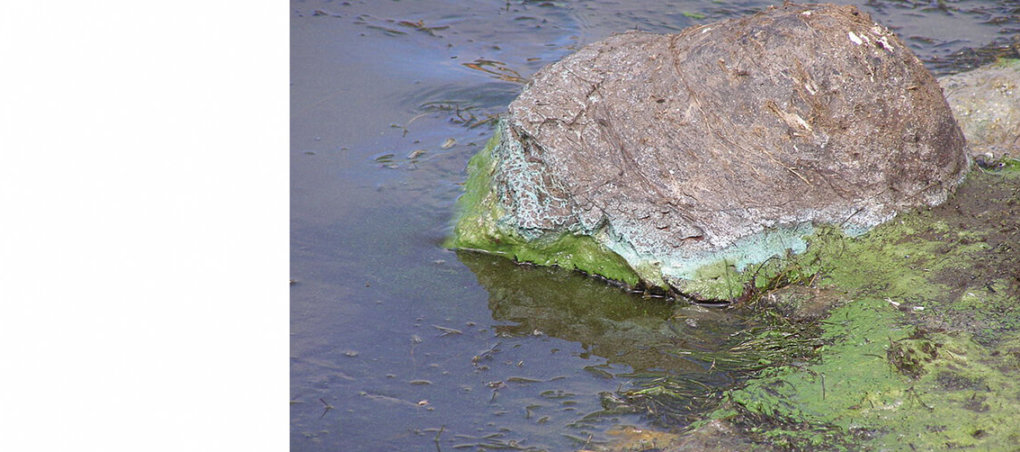
Algae season in New Brunswick is officially upon us.
The province issued a blue-green algae advisory for Nashwaak Lake on Tuesday, July 25 after lab tests confirmed the presence of a bloom in the typically cold-water lake north of Fredericton.
By now, you’ve probably heard of algae blooms — especially when they keep you from taking a dip in your favourite body of water on a hot summer day. But do you know exactly what the blooms are, or ways you can help prevent them from forming?
What are blue-green algae, anyway?
In fact, blue-green algae are not an algae at all. What we call blue-green algae are actually photosynthetic cyanobacteria that early scientists mistook for algae.
The bacteria occur naturally in waters and have been around for millions of years – one of the oldest forms of life. When the conditions are right, its individual microscopic cells collectively form a colourful blue-y, green-ish, brown-esque “bloom.” The blooms typically form in water that is shallow, slow moving and warm – lakes in the summertime are often ripe with these conditions.
Some experts say that climate change (warming waters, heavier rainfalls) is also contributing to the bacteria’s growth, meanwhile scientists from Bowling Green State University in Ohio have studied links between algae blooms and the use of herbicides containing glyphosate around Lake Erie, which, you may recall, has experienced blooms so large they can be seen from space.
Even though blue-green algae occur naturally, a bloom can also be triggered by pollution into a water body — mostly phosphorus, a nutrient very common in our lives.
Some of the main sources of phosphorus getting into our waters include:
- Septic systems: septic systems that store and treat sewage and household wastewater on individual rural and shoreline properties can leach phosphorus and other contaminants into nearby water bodies when not properly installed, maintained or monitored. Soaps and detergents down the drain are also a large source of phosphorus from households.
- Runoff: rain and snowmelt can carry a combination of phosphorus and other contaminants directly into our waterways and also our storm sewers systems. The phosphorus in runoff can come from lawn and garden fertilizers, agricultural lands, pet waste, and decomposing organic forest and yard waste.
- Atmospheric deposition: phosphorus can also make its way into water bodies from the air by wind, rain and snowfall from such activities as exposed landfill and compost heaps, coal combustion, and dust from quarries, agricultural fields and unpaved roads.
- Internal loading: when the soil and sediments of a lake are stirred up during dredging activities (the process of clearing or deepening navigational routes) or natural processes that cause the lake waters to mix from changes in temperatures or high winds, phosphorus can make its way back into the water column.
If you spot a bloom near your favourite swimming hole, it’s best to stay out of the water. Certain strains of cyanobacteria contain toxins which are poisonous and can cause skin irritations (in the form of rashes, hives, or skin blisters) and can cause illness in people and animals if inhaled.
What can we do?
Unfortunately, these algae blooms occur more often in the summer when we want to visit lakes and get our feet wet. So, here are a few things you can do to prevent blooms from happening:
- What you put down the drain can end up in our waters. Switch to phosphorous-free cleaning products like dishwasher detergents.
- What you put on your lawn or garden can end up in our waters. Avoid over using fertilizers and only apply when necessary and try non-toxic alternatives when possible.
- Make sure your septic system is checked and cleaned every five years or so.
- Leave your shoreline natural and if necessary restore the shoreline with fast growing vegetation to prevent erosion and help absorb nutrients before they enter the water. Wetland areas are especially important in filtering out nutrients like phosphorus and other contaminants.
Stay tuned to our blog for more updates on blue-green algae blooms in New Brunswick.
For more information on the public health implications of a blue-green algal bloom, visit the Department of Heath’s Q & A

